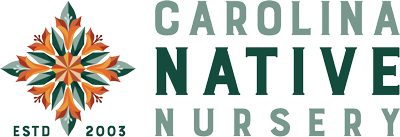Nativars Are Not Native Plants! It’s a Lie.

Nativars are not native (indigenous) plants!
By: Bill Jones, President, Carolina Native Nursery
‘Nativars’ is a coined term, and not a real word, trying to jam the native plant movement into the standards of modern horticulture. One of those standards is constant new plant introduction: celebrated trials, breeding programs, grand plant searching tours abroad, because of horticulture’s belief that more and new is good. So perhaps our industry, recognizing that more and more customers want native (indigenous) plants for pollinators, birds and wildlife, butterflies, and all the other ecological reasons, is trying to find a ways to capture this market. Disregarding the fact that many of these plants (nativars) have few or none of the ecological benefits species natives do. The use of the term ‘nativar’ causes unnecessary confusion that is unwarranted and needs to end.
Cultivars and selections are great. Plants have been bred for centuries to bring out the best. Disease resistance, sizes, colors, bloom types, timing, better fruiting, the list goes on and on. Whether found in the wild, bred in a backyard, developed in a lab, cultivars and selections give gardeners and agriculture choices and solutions. The work that is currently being done by the American Chestnut Foundation breeding Chinese Chestnuts with the American Chestnut to bring it back is a prime example of the wonderful things horticulture can do. Over 1 billion American chestnut trees in 20 states were wiped out due to the importation of infected stock. Restoring these majestic trees to the Appalachian range is an awesome goal (American Chestnut Foundation).
What’s the difference and why is it important? Native (species) plants have evolved over time along with the insects, birds, pollinators and the rest of the fauna. They recognize and depend on each other for survival. On an evolutionary timescale, man-made cultivars showed up a second ago. Plus, native plants are best adapted to the climate and soil they have evolved in. Many of these ‘nativars’ do not produce seed (birds eat seed), produce inferior nectar, are not attractive to as many pollinators and butterflies or not attractive at all, provide no genetic diversity in that they are all clones, fail in landscape over time, do not increase native habitat for any wildlife, could be invasive, and more. These reasons and others are why the National Wildlife Foundation, The Audubon Society, The Wild Ones, and more environmental organizations all recommend native plants, but many warn against ‘nativars’.
Carolina Native grows some cultivars too. Cultivars are fine. But the term ‘nativar’, which we refuse to use, will lead your customers to think that these plants have the same ecological advantages that species native plants have when chances are they don’t.
